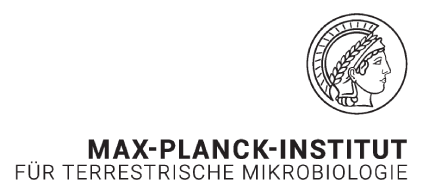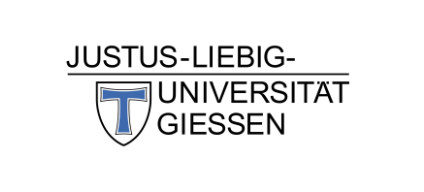Main Content
Interaction, Dynamics & Assembly
Dr. Wieland Steinchen
AG Prof. Dr. Gert Bange
Karl-von-Frisch-Str. 14, 35032 Marburg
Phone: +49-6421 28 25761
Mail: wieland.steinchen@synmikro.uni-marburg.de
Description of the Marburg core facility for Interactions, Dynamics and biomolecular Assembly Structure
Proteins exhibit three-dimensional (3D) structures that specify their function. The function of proteins is based on their concise dynamic properties that allow for conformational changes required for their interaction with other proteins and ligands, such as metals, small chemical compounds, peptides, RNA and DNA. Detailed analysis of protein structure and dynamics is crucial for the molecular understanding of biological processes. Protein structure determination has made major progress mainly through X-ray crystallography and nuclear magnetic resonance spectroscopy (NMR).
However, analysis of the dynamic behavior of proteins and their macromolecular assemblies is not straightforward and easy-on methods still lag behind. Although NMR can provide great insights, it is often hampered by the size of a protein or its assembly, and/or by the sample amount and stability during the rather long measurements.
In recent years, Hydrogen-Deuterium eXchange mass spectrometry (HDX) has offered an attractive new route for the analysis of the dynamic behavior and the structural features of proteins and macromolecular assemblies in solution. HDX can be performed with low sample quantities. Moreover, measurements are usually performed in the time scale of seconds to minutes. HDX relies on the principle that the amide protons of all amino acids (except for proline) within the peptide bonds of proteins undergo exchange with deuterium in deuterated or ‘heavy’ water on a time scale that can be measured by mass spectrometry. The hydrogen-to-deuterium exchange rates depend on temperature, pH and the physico-chemical environment in which the respective amide proton is located (i.e.; solvent accessibility and hydrogen bonding).
In folded proteins, protein assemblies or when “covered” by other molecules, the amide hydrogens display detectable differences depending on their location within the protein/assembly and whether they are engaged in intra-/intermolecular hydrogen bonding. Therefore, HDX can be used to study a variety of questions associated with protein dynamics and structure, such as solvent accessibility and dynamics of protein regions, pH- or temperature-dependent conformational changes, protein folding and unfolding pathways, conformational changes in the presence of binding partners, e.g. small molecules, drugs, proteins, nucleic acids, and the location and properties of interaction interfaces of proteins within macromolecular complexes.
In 2013, we established HDX in Marburg in a manual low-throughput setup as a reasonable routine method. Soon after, many other researchers on campus realized the high potential and impact of HDX for their own research. To deal with the increasing demand requested by groups from the Center for Synthetic Microbiology (SYNMIKRO), but also the SFB987 and the Faculties of Chemistry, Biology and Pharmacy, an automated HDX pipeline in 2015 has been established. The commercially available system combines a pipetting robot and a high-end Synapt G2-Si mass spectrometer with IMS and ETD (Waters). At the end, a professionalized, operational unit providing scientific and technical support, entitled Marburg core facility for Interactions, Dynamics and biomolecular Assembly Structure has been created.


